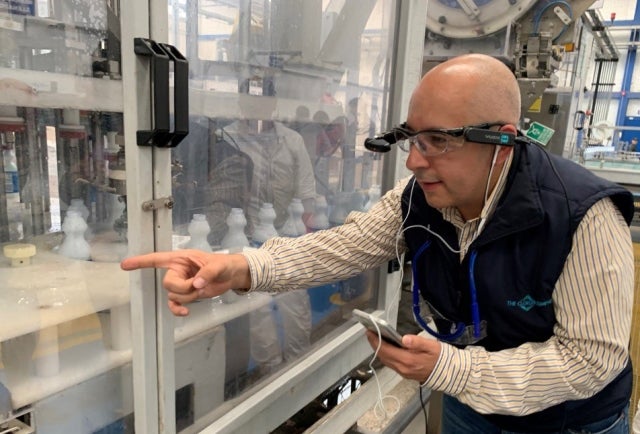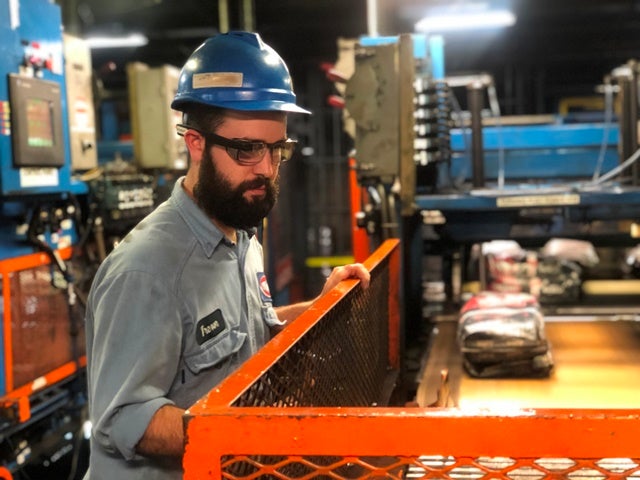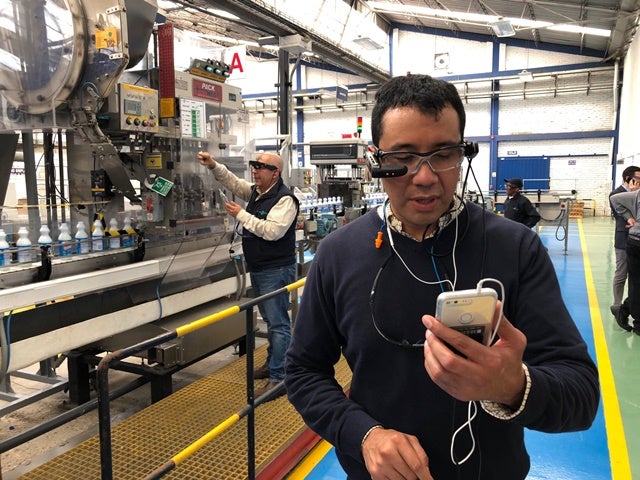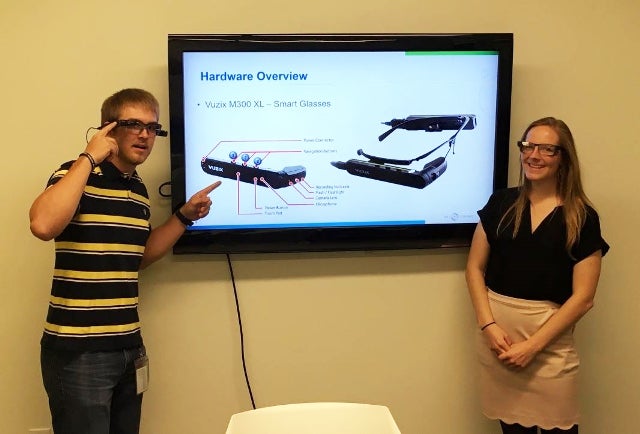“Seeing” the Future of Manufacturing
By John Cogswell, senior communications specialist
When Google Glass launched in 2013, there was talk that smart glasses were the future.
Needless to stay, the future looks a little different than we expected. Nevertheless, Clorox is finding ways to use technology like smart glasses and tablets to empower employees and improve efficiency.

Juan Diego Giraldo in the Clorox plant in Bogota, Colombia
In multiple plants across Clorox, employees are using smart glasses and tablets to troubleshoot and even perform equipment repairs. They simply scan QR codes on a machine to pull up manuals and information guides specific to that machine, instantly. This puts important information at employees’ fingertips and saves time they would otherwise spend searching for the information they need.
“In the past, employees spent a lot of time printing off guides for various pieces of equipment,” says Coray Carlson, a member of Clorox’s Manufacturing Leadership Development Program (MLDP). “Now, using the glasses to scan QR codes, employees get the data they need in an efficient way that’s much more user- and environmentally friendly.”

Trevor Vanscoy uses smart glasses technology at our Kingsford plant in Parsons, West Virginia.
In addition, six plants across Clorox are piloting VUZIX glasses, which allow plant employees to connect with expertise outside the plant for more complicated repairs. That remote expert can see exactly what the employee sees and guide him or her through what to do.
“This helps us cut down on travel costs and time associated with sending the technician onsite,” says Kelsey Brazitis, a member of Clorox’s Supply Chain Leadership Development Program. “And our employees get firsthand experience they might not otherwise receive.”

Rafael Alba uses smart glasses in our plant in Bogota, Colombia
All equipment manuals and guides live in the cloud, and can be accessed via the smart glasses and tablets.
In addition to storing this data, the tablets also include an app we call “Share2Act,” which works sort of like a social media platform. It allows employees to photograph and document a machine’s status at their facility and share the information directly with managers for review.
While this use of technology to transform and improve our manufacturing operations is still new, we’re excited about what’s possible, for the benefit of the company and our people.

Coray Carlson and Kelsey Brazitis




